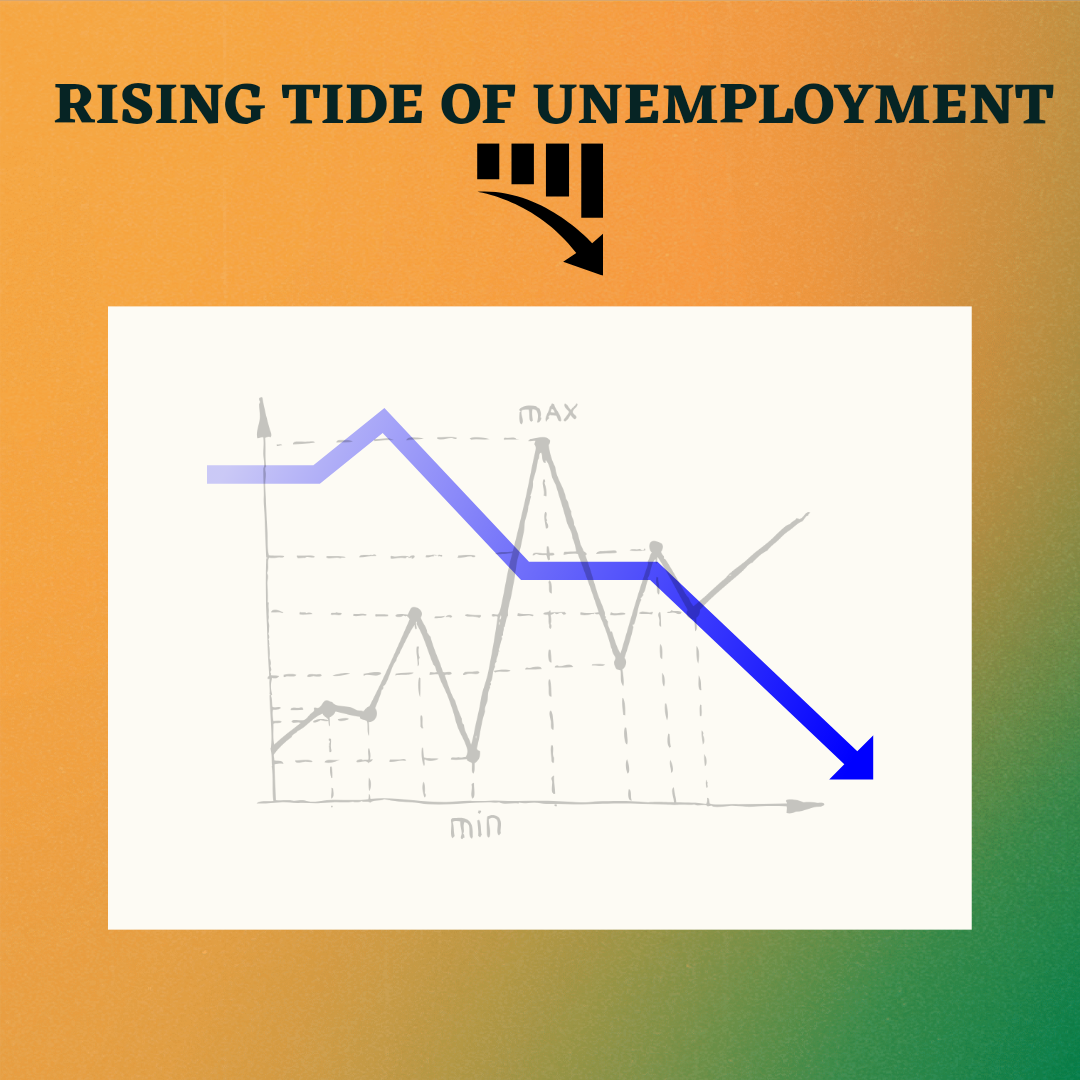The Rising Tide of Unemployment in India
India, a nation of diverse cultures and a burgeoning population, is grappling with a pressing issue that threatens its socio-economic fabric – the rising tide of unemployment. Despite being one of the world’s fastest-growing economies, the country faces a paradox where economic growth has not translated proportionately into job creation. This pervasive challenge has far-reaching implications, impacting individuals, communities, and the overall development trajectory of the nation.Economic Growth vs. Job CreationIndia has experienced significant economic growth in recent decades, becoming a global player in industries like information technology, pharmaceuticals, and services. However, this growth has not been inclusive, failing to generate sufficient employment opportunities for its burgeoning population, particularly the youth. The dichotomy between economic expansion and job creation underscores a structural issue that demands urgent attention.Youth Unemployment: A Looming CrisisA significant proportion of India’s population is under the age of 35, making it one of the youngest nations globally. While youthfulness can be an asset, it also poses a challenge when there are not enough employment opportunities to absorb this demographic dividend. The rising tide of youth unemployment is a ticking time bomb, with potential social and economic ramifications. The frustration and disillusionment among the youth could lead to social unrest, hindering the country’s progress.Factors Contributing to UnemploymentSeveral factors contribute to the rising unemployment in India. One key factor is the gap between the skills demanded by the job market and those imparted by the education system. The mismatch between educational qualifications and industry requirements leaves a significant portion of the workforce unemployable. Additionally, the slow pace of economic reforms, bureaucratic hurdles, and a complex regulatory environment have deterred entrepreneurs from establishing businesses, limiting job creation.Impact of Technological DisruptionThe advent of automation and artificial intelligence has further complicated the employment scenario. While these technological advancements bring efficiency and innovation, they also displace traditional jobs, particularly in manufacturing and routine service sectors. The challenge is not only to create new jobs but also to re-skill the existing workforce to adapt to the evolving technological landscape.Informal Sector PredicamentA substantial portion of India’s workforce is employed in the informal sector, characterized by low wages, lack of job security, and limited access to social security benefits. The informal nature of employment makes it vulnerable to economic shocks, leaving workers without a safety net. The lack of formalization in the labor market exacerbates the unemployment challenge, as these workers often struggle to transition to more stable and secure forms of employment.Government Initiatives and ChallengesThe Indian government has recognized the severity of the unemployment issue and has introduced various initiatives to address it. Programs such as ‘Make in India,’ ‘Skill India,’ and ‘Start-Up India’ aim to boost manufacturing, skill development, and entrepreneurship. However, the impact of these initiatives has been limited, and challenges persist in implementation. Bureaucratic bottlenecks, policy inconsistencies, and the sheer scale of the issue hinder the effectiveness of these measures.Regional DisparitiesUnemployment is not evenly distributed across India, leading to regional disparities. While urban areas may face challenges of underemployment and job saturation, rural areas often grapple with a lack of diverse employment opportunities. Bridging this urban-rural divide requires targeted policies that address the specific needs of each region, recognizing the diverse economic landscapes within the country.Social ConsequencesThe rising tide of unemployment has profound social consequences, impacting mental health, family structures, and community dynamics. Individuals facing prolonged unemployment may experience a sense of despair and loss of self-worth. Families bear the brunt of financial strain, often leading to strained relationships. The social fabric of communities is also affected, as unemployment can contribute to social unrest and crime rates.International PerspectivesIndia is not alone in facing the challenge of unemployment, and lessons can be drawn from other nations that have successfully navigated similar issues. Learning from countries that have effectively addressed unemployment through a combination of policy measures, education reforms, and targeted interventions can inform India’s approach to mitigating this crisis.The Way ForwardAddressing the rising tide of unemployment in India requires a multi-faceted and collaborative approach. Education reforms must align with industry needs to bridge the skills gap. Simultaneously, the government needs to streamline policies, reduce bureaucratic hurdles, and create an environment conducive to entrepreneurship. Investment in infrastructure projects, particularly in rural areas, can unlock new employment opportunities.Encouraging innovation and supporting the growth of emerging industries, such as renewable energy and technology, can diversify the job market. Social safety nets and robust support systems must be in place to protect workers in the informal sector. Additionally, international collaborations and partnerships can facilitate knowledge exchange and best practices in tackling unemployment.ConclusionThe rising tide of unemployment in India is a multifaceted challenge that demands immediate attention and sustained efforts. It is imperative for the government, businesses, educational institutions, and civil society to collaborate in crafting comprehensive solutions. A nation’s progress is intrinsically linked to the well-being of its workforce, and addressing unemployment is not just an economic necessity but a moral imperative. As India navigates the complexities of its demographic dividend, strategic and concerted actions will determine whether the rising tide of unemployment can be stemmed, unlocking the full potential of this vibrant and dynamic nation.




